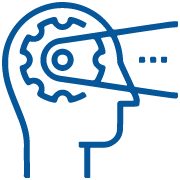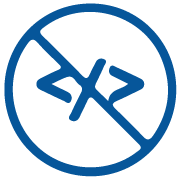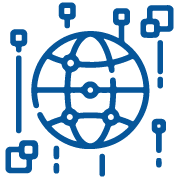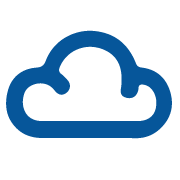2023 SAP Trends
Businesses across every industry are continuing to navigate a tricky landscape. From dealing with inflationary pressures and economic uncertainty to geopolitical instability and supply chain disruptions, they must identify ways to stay competitive, profitable, and relevant. For many, investing in SAP is the way to do just that, enabling organizations to optimize business processes, make data-backed and data-driven decisions, increase productivity, and more. In this piece, we outline some of the key SAP solutions to keep top-of-mind and as well as the top 2023 SAP trends. With the annual SAP SAPPHIRE Conference just around the corner, we expect to hear even more about these areas in the coming days and weeks.
2023 SAP Trends
1. Business Process Intelligence / SAP Signavio 
SAP Business Process Intelligence (BPI) is a cloud-based solution that provides companies with real-time insights into their business processes. With SAP BPI, companies can analyze their end-to-end business processes from order to cash, procure-to-pay, and everything in between. The solution uses process mining technology to automatically discover and map out these processes, giving users an accurate and comprehensive view of their operations.
One of the key advantages of SAP BPI is its ability to provide real-time insights. This means that companies can monitor their processes as they happen, identify any issues or inefficiencies, and take immediate action to resolve them – in turn, minimizing downtime and reducing errors. Another advantage of SAP BPI is its ease of use. The solution is designed to be user-friendly and intuitive, with drag-and-drop functionality and customizable dashboards. BPI is also a solution that can be easily integrated with existing enterprise applications, making it easier for businesses to seamlessly streamline their workflows. SAP BPI differs from other SAP solutions in that it focuses specifically on process mining and optimization.
While the ideas of enhanced operational efficiency and greater visibility idea are nothing new to the world of SAP, the demand for a solution such as BPI continues to grow, particularly as businesses become more digital and data driven. Organizations are seeking to harness the power of their data to gain insights and improve their business processes, and BPI provides a way to do so. If you’re an existing SAP ECC customer, SAP BPI can provide insight into the bottlenecks and constraints of your current processes so that you can plan to address these as you upgrade. Once you move to S/4, this can be a key tool to continuously monitor your processes and identify inefficiencies.
2. Low Code/No Code 
SAP low code/no code refers to a set of tools and technologies that allow developers and non-developers to create applications with minimal coding effort. These platforms are designed to simplify the application development process by providing drag-and-drop interfaces, pre-built templates, and other visual development tools that don’t require extensive coding expertise – and it’s gaining quite a bit of traction with SAP users in 2023.
For example, SAP’s low code/no code platform, SAP Build, provides a visual drag-and-drop interface for building mobile and web applications. The platform also includes pre-built templates and connectors to commonly used data sources as well as features for collaboration and sharing of applications.
There are several benefits to low code/no code, including faster development and deployment of applications, improved agility and flexibility, and reduced reliance on specialized developers. This is a significant development from SAP and helps businesses with quicker acceleration; however, that said, it’s still early and there might be limitations in terms of actual scenarios where this could be applicable.
3. SAP Datasphere
SAP Datasphere is the latest in the line of solutions addressing a scenario where data from heterogeneous sources need to be synthesized for reporting and analytics. It’s the next generation of the SAP Datawarehouse Cloud solution with significant new functionalities.
SAP Datasphere provides:
- The ability to both federate and ingest data with equal ease depending on your landscape/architecture.
- An introduction to the functionality for semantic modeling, called the datasphere analytical model, that supports richer and business-aligned modeling.
- Options to harmonize data from heterogeneous landscapes and a common and consistent business semantic model (called business data fabric).
- Access to industry data from several sources to enrich data at a topical level. (The SAP Datasphere Marketplace has also been updated to make it even easier for organizations to leverage external industry data, supporting business-relevant use cases and data democratization initiatives through the internal data market).
Additionally, in an interesting and significant move, SAP has teamed up with several open data partners such as Collibra, as it pertains to governance; Confluent, with the ability to stream real-time data; Databricks, with their Data Lakehouse platform; and DataRobot, for the machine learning capabilities they provide. In essence, SAP Datasphere is a significant development for SAP as it moves into a more flexible, open, and most importantly, business-centric data warehousing environment.
4. SAP S/4HANA Cloud ERP 
The fourth of our 2023 SAP trends is SAP S/4HANA Cloud ERP! SAP S/4HANA is a ready-to-run cloud ERP that delivers the latest industry best practices and can help businesses pursue continuous innovation and growth. Pre-configured processes allow companies to reshape business models, scale without adding complexity, and flex as their business grows. It’s primarily implemented as a greenfield solution for the mid-market segment and is said to reduce implementation time by more than 50% compared to the S/4HANA private cloud or SAP on-premise system. The innovations are rolled out automatically and fully managed by SAP. The solution also allows for customer-specific extensions using SAP’s Business Technology Platform and a comprehensive set of APIs using side-by-side extension architecture, which is provided as part of the recent offering.
If you are a small and medium enterprise and are evaluating a robust ERP solution but are wary of some of the challenges around cost and time to implement; would like to leverage industry-leading practices; and/or want to minimize running costs, then you should consider S/4 HANA Cloud ERP.
Looking Ahead
The future of SAP will depend on various factors, including market dynamics, technological advancements like AI/ML, evolving customer demands, and more. To stay up to date with the latest SAP trends and solutions that can benefit your business, connect with our SAP Consulting team today. These 2023 SAP trends are a great place to start, but wherever you are on your digital transformation journey, our team of seasoned SAP experts can help.




